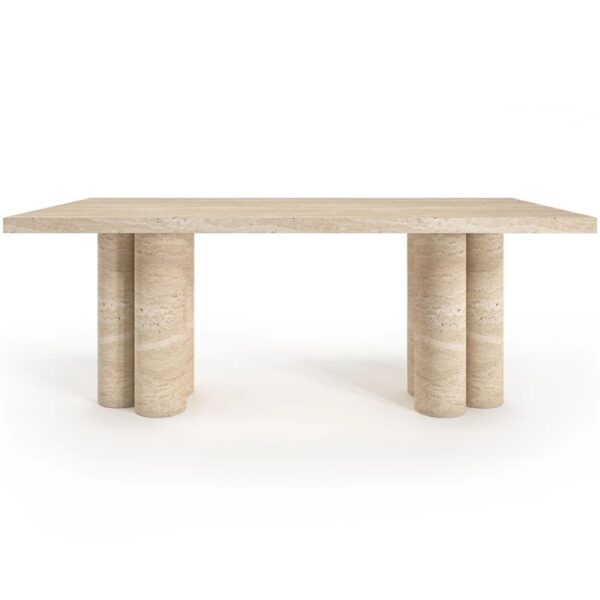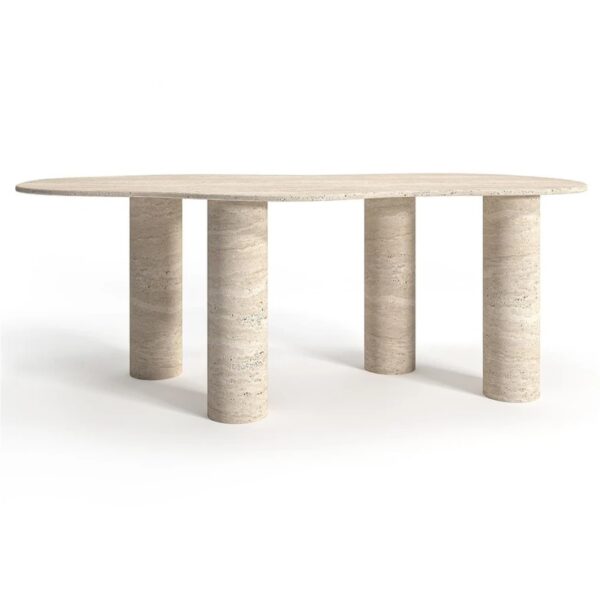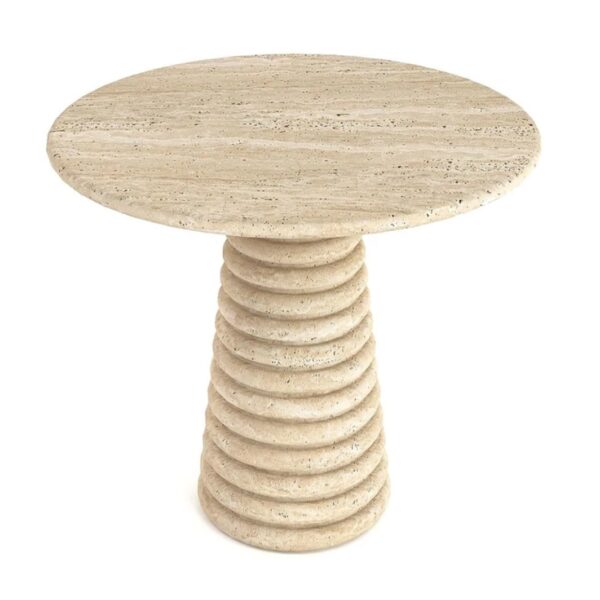TABLE PRODUCTION PROCESS
The natural stone table production process is based on delicate processing of natural stones and careful design to ensure that the table has both a durable and aesthetic structure. Natural Stone Table production process begins with the production of Natural Stone. Among the Natural Stones obtained from quarries and brought to the factory, the ones suitable for the design and usage area are selected. The homogeneity of the stone’s color, vein structure and durability are checked. Stones with defects or cracks are eliminated. The cut stones are sliced and shaped to suit the coffee table dimensions.
Material Supply and Selection
The stones used in table production (marble, granite, onyx, travertine, etc.) are supplied in blocks from quarries. The selected stones are checked for pattern, color uniformity and structural durability. If cracks or defects are detected, these parts are separated. Stone blocks are cut into slabs of thickness suitable for table dimensions with large-sized diamond saws, gang saws or wire cutting machines. Stone slabs are cut and shaped in sizes suitable for the table design. Table forms such as round, rectangular and square are processed precisely with CNC machines.
Surface Treatments
The stone surface is made smooth and smooth. The surface of the table is polished for a glossy appearance to reflect light, or special treatments are applied for a matte appearance. Natural stone is coated with a special protective coating (for example, epoxy or nano-coating) to increase resistance to stains, water and abrasions. Rounding, straight cutting, chamfering or decorative engravings are applied to the edges of the table. Optionally, patterns or texts can be added to the surface or edges of the table with CNC machines.
Production of Table Legs
Table legs are made of materials such as metal, wood, marble or glass. Durable materials that can bear the weight of the stone are used in the design. Table legs are cut according to the design, assembled and coated against rust (for example, chrome plating or powder coating).
Assembly
Combining the Stone and the Legs: The table top and the legs are joined using special fasteners or adhesives. The fixing process is done carefully to ensure balanced distribution of weight. After assembly, the stability, balance and aesthetics of the table are checked. The brightness, pattern homogeneity and edge details on the surface are checked. The weight bearing capacity and stability of the table are tested. If defects are detected, they are corrected.
Packaging and Shipment
The stone table is protected with bubble wrap, styrofoam or wooden crates against breakage.7 The table is safely packaged and delivered to the logistics unit.
Implementation of Special Requests
Special designs, color selections or engraving processes can be added depending on customer request.
This process involves the combination of modern CNC technology and traditional craftsmanship. Natural stone tables are generally preferred both indoors and outdoors due to their aesthetic appearance and durability.



